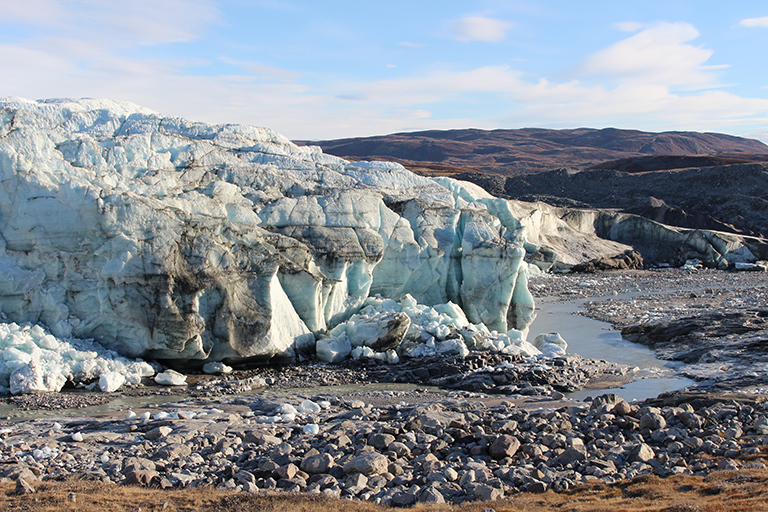Ask NASA Climate | October 6, 2016, 13:46 PDT
A wall of ice in transition

The terminus of Russell Glacier, Greenland.
I went off for a day to visit Russell Glacier, which flows from the Greenland Ice Sheet down the Akuliarusiarsuup Kuua River, into the Kangerlussuaq Fjord and out into the Davis Strait. I knew I’d watch it melt right in front of me. And I expected to feel sad standing there so close to such an obvious and intense signal of global warming and climate change.
I stood there as the Arctic sun moved onto the horizon behind me, breathing the cool air, listening to the loud rush of meltwater passing between me and the 200-foot wall of ice in front of me. I thought about the 100,000-year span of time that this ice sheet has lasted on this planet. I looked toward the Akuliarusiarsuup Kuua River valley thinking about the future of that meltwater as it flowed out to sea. As we continue adding heat-trapping gases to our environment, our climate will keep changing and this meltwater will only increase. Someday the whole ice sheet may be gone.
I was supposed to feel sad. But I didn’t. Instead I just felt grateful to be alive, right here, right now, in 2016. To be alive in that time between 100,000 years ago and the whatever-will-happen-in-our-climate-changed future.
I hope you understand.
Laura
